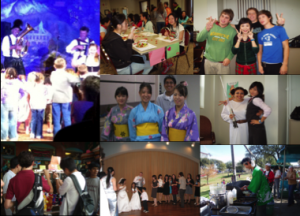Globalization is our current reality. Most successful companies have established themselves internationally. Foreign policy is becoming as much of a concern as domestic policy. The environment, global warming, and lack of resources are international problems requiring international brainstorming and problem-solving.

Problems
Social media, such as Twitter, makes us more globally aware. However, are we preparing our students to effectively problem solve, collaborate, and communicate with their peers abroad? My experience has shown me that several students still live in a microcosm where they carry misconceptions and assumptions about people living in other countries. The problem is that when these students enter their career fields they will have to collaborate with others from various cultures and backgrounds. When this communication takes place our students will carry those assumptions and misconceptions into the conversation either verbally or non-verbally and create barriers to effective problem-solving of global issues.
I have worked on over 20 different global teams for over 20 various international projects within the last two years. A majority of these experiences were frustrating and argument often ensued or projects suffered due to the lack of skills members had in working on global teams. These are a few problems I saw:
- Unwillingness to be flexible
- Cultural insensitivity
- Cultural misunderstanding
- Lack of communication of deadlines, project details, roles, duties, etc.
- Time zone differences
- Unwillingness to compromise
- Mutual misunderstanding of cultural customs in negotiation and communication (nonverbal and verbal)
- Mishandling of conflict
- Inexperience in communicating with English language learners- remember that most English speakers in the world are not from the United states, but from China and India. Therefore, English speakers will have accents or may have learned British English. Students need experience in communicating with non-native English speakers.
Experience
Many people have told me I am great at organizing global projects. My extensive experience and research in this field is what has helped me plan projects quickly and effectively. When the process is done effectively then the outcomes are magnificent. I believe collaboration is key to all successful projects. Yes, I may have a fantastic idea, but unless I get help from you then the project may not reach its potential greatness.
In the same respect, students need to learn various skills so when the time comes they will be able to collaborate effectively! The easiest way for students to learn this is through involvement in global projects offered by the classroom.
How to Prepare Kids for Global Collaboration
- Integrate cultural projects- Have students research poetry from around the world or investigate their own roots.
- Create Culturally Responsive Curriculums– This type of curriculum celebrates and responds to various cultural issues through student-centered instruction.
- For example, have English language learners give presentations about their culture
- Have students collaborate on solving global issues such as poverty, unequal access to education, war, and racism
- The teacher acts as a facilitator
- Use literature from various authors and genders- For my high school ESL class, we used the Brief Bedford Reader which featured stories from various authors, such as Maya Angelou, Sherman Alexie, Amy Tan, and Gore Vidal. How diverse are your students’ reading lists?
- Host cultural festivals- I created an International Society with another teacher in the school with over 70 students involved. We had over 100 members of the community attend our International Thanksgiving supper which featured over 30 ethnic dishes.
- Have students research their backgrounds or other cultures and make food and give presentations. You can even receive donations from local grocery stores.
- Connect with a school in another country- Go the extra step and have students problem-solve issues! Some useful collaboration tools and links to help you with this process:
- Skype– Sue Waters lists several schools to connect with through Skype in this post!
- Wetoku– See Ana Maria Menezes’ interview with Ozge about her children’s global projects.
- Glogster– Have your students join this global Glogster project by Arjana Blazic
- VoiceThread– Read my post on my connection with my kindergarten class to kindergarten classes in Turkey and New Zealand using VoiceThread.
- We Are Teachers- Read this article on how I connected with Candace Townsley using We Are Teachers and Skype.
- The Harris Burdick Online Collaborative Writing Project- Watch this video to see how schools connected using Skype and Google Docs!
- Blogging- Read Rawya Shatila’s class blog in Lebanon, which shows how they connect with several classes around the world!
- Chickensaltash writes about a fantastic collaborative project in which students from various countries write about the heroes in that country! Read the post here which details the planning process.
- Go on virtual field trips- Create your own virtual tours on Google Earth. Use already established tours on Google Earth, Webquests, TeenGrid and so forth to learn about places around the world.
- Get your students connected through social media such as Twitter!
Challenge:
Use one of these ideas to teach your students to collaborate on global teams!
You may want to subscribe to receive regular updates, leave a quick comment of how one of these tools helped you, tweet this, or share this series with your Personal Learning Network (PLN) through your RSS reader or Delicious account.





